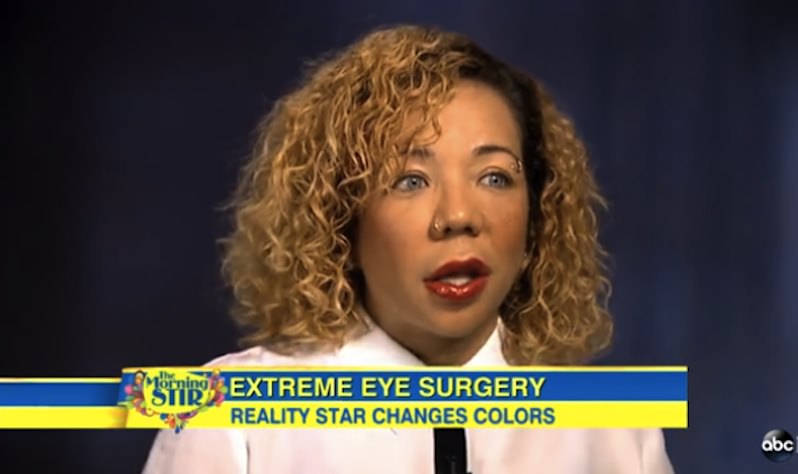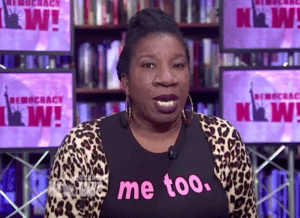Wearable Technology or Identity Reassignment?: Renee Zellweger’s and Tameka Harris’ Transformations
Zellweger and Harris are teaching us a couple of lessons about how identity looks and feels in our techno-driven world. Screen shot of Tameka Harris from "Good Morning America."
Screen shot of Tameka Harris from "Good Morning America."
Screen shot of Tameka Harris from “Good Morning America.”
Last week actress Renée Zellweger caused a stir when she posed for cameras with her new, different look. This week, singer and reality-TV star Tameka “Tiny” Harris appeared on Instagram with a new, permanent ice-gray eye color. To some, these events might seem like they are pulled from the technologically dystopian TV series “Black Mirror,” in which people get permanent memory and IQ implants and bring dead loved ones back to life through social media. To others, these events may seem like all-too-real attempts at “passing” — being accepted, or representing oneself successfully as a member of a different group than the one(s) to which society says a person belongs.
To me, Zellweger’s and Harris’ updated images are invitations to a future that may await us all. I call it Passing 2.0, an era of “identity reassignment” bound only by the limits of imagination, money and technology. An era in which questions of well-being as they relate to age, gender, race, occupation and class can be treated with ambivalence — if they are treated at all.
In this future some of us will grow accustomed to the sights and sounds of diversity and the ideal that law and culture treat every person equally. Meanwhile, others will grow increasingly uncomfortable and experience discontent with the identities we’ve been assigned at birth and/or the stereotypical roles associated with those identities.
Zellweger and Harris may be among the latter group. As such, they are teaching us a couple of lessons about how identity looks and feels in our techno-driven world.
Lesson 1: Privacy. Basically, these women’s new appearances reveal that identity is on its way to becoming an editable “profile” that can be considered private property worth protecting when you pay for it. Yet, because Zellweger and Harris have both found difficulty in settling on “appropriate” angles for justifying their changes, we learn that women find it hard to protect themselves with a veneer of privacy, especially when they choose to occupy spaces in which they “naturally belong.”
Lesson 2: Assimilation. While many critics might argue that these two women are only attempting to assimilate identity categories based in white supremacy and patriarchy, they actually represent the profound failures of an assimilationist project. What’s more, Zellweger and Harris teach us that when assimilation fails, appropriation — through the dramatic step of cosmetic procedures, in their cases — takes its place. The fact that these elective procedures are available to the likes of celebrities also raises the question of whether age, race and gender — equal parts biology, sociology and, now, consumer choice — can ever be transcended.
In the end, Zellweger’s and Harris’ updated looks present us with an opportunity to think more about some dilemmas of identification and representation in our present moment from a future-oriented perspective. What makes the matter all the more interesting is the outrage the women face as they re-enter the public sphere. No matter what anyone thinks about their new looks, Zellweger and Harris are early adopters, modeling for all of us how identities and experiences are filtered through and determined by technologies of race, class, gender and health. And for that reason they invite a closer look.
Your support matters…Independent journalism is under threat and overshadowed by heavily funded mainstream media.
You can help level the playing field. Become a member.
Your tax-deductible contribution keeps us digging beneath the headlines to give you thought-provoking, investigative reporting and analysis that unearths what's really happening- without compromise.
Give today to support our courageous, independent journalists.






You need to be a supporter to comment.
There are currently no responses to this article.
Be the first to respond.